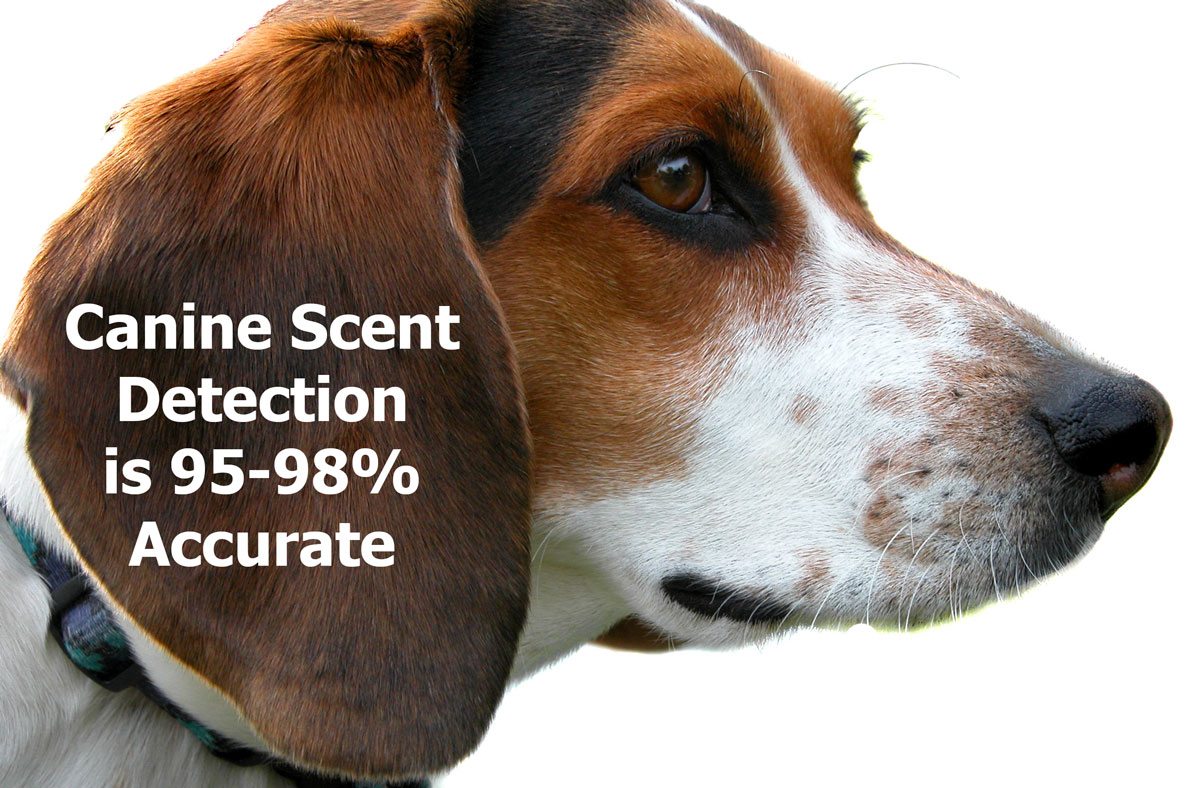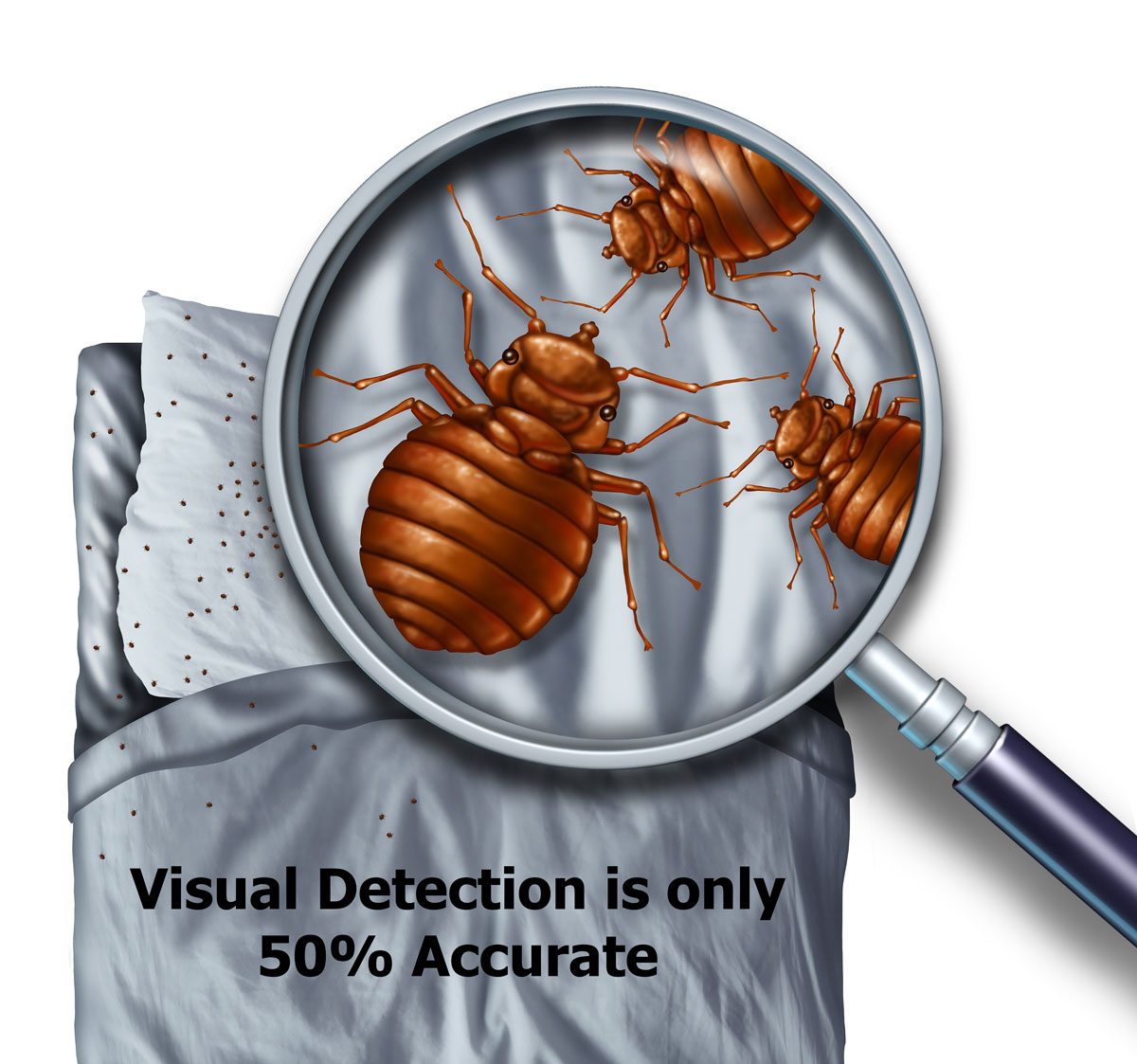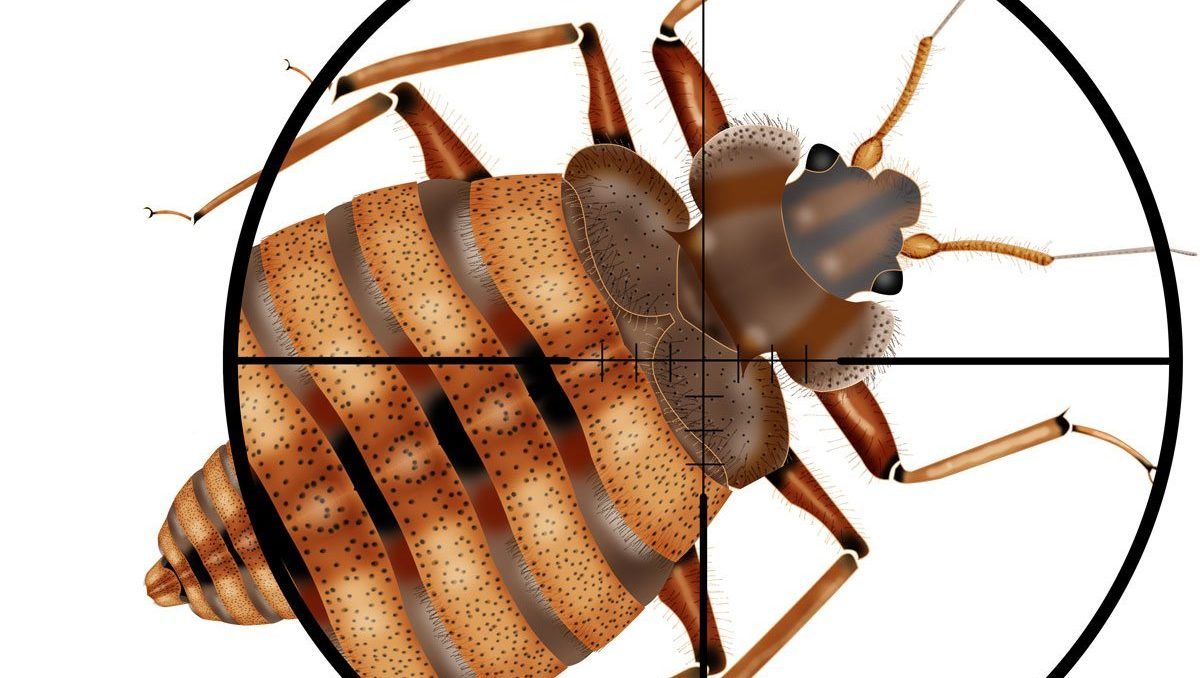Bed bugs are notoriously hard to get rid of. Due to their size, their ability to hide, and the swift rate at which they reproduce bed bug infestations are on the rise all over the world. The key to avoiding an infestation in your home or property is early detection. However, if you are not familiar with the signs of live activity, bed bug detection can be a very challenging task.
Why is Bed Bug Detection so difficult?
During most of their development stages, bed bugs are no larger than the size of a sesame seed and their light-colored eggs easily blend into the carpet, bedding, and furniture. Because of this, many DIY detection efforts fail to recognize the presence of live bed bug activity. Failing to detect bed bugs before an infestation occurs can cost homeowners or property managers thousands of dollars. Not to mention the mental toll it can take on those forced to live with the bed bugs feeding on them while they sleep.
How DO you detect Bed Bugs?
When it comes to bed bug detection, there are three main methods:
- Canine Scent Detection
- Visual Detection
- Passive Interception
Canine Scent Detection – 95-98% Accuracy
This method is the fastest and the most accurate way to detect bed bugs. Boasting an accuracy rate of 97-98%, properly trained and maintained scent detection canines are by far the best choice for detecting bed bugs. Able to smell out an infestation in a matter of minutes, certified dogs and their handlers help to save people time and money by sniffing out bed bugs on the first inspection, and determining if any traces of live bed bug activity remain after treatment.

Getting it right the first time is a time and money saver in bed bug extermination, so make sure that the pest control company you select is using a NESDCA certified canine. Breeds such as Bloodhounds and Beagles make excellent dogs for sniffing out bed bugs due to their highly sensitive noses. Scent detection dogs receive 1,000 hours of training before being certified to detect bed bugs. In addition to this hour requirement, the dog and its handler also have to pass through NESDCA testing together.
Visual Detection – 50% Accuracy
Another method of detection is visual detection. Which has a 50% accuracy rate, compared to the 97-98% accuracy of canine scent detection. Not only is visual detection less accurate but it is also very time-consuming. During the inspection, a technician must go throughout the entire home looking through all the nooks and crannies in search of bed bug activity. The whole process can take multiple hours compared to the minutes required for canines.

The technician only needs to find one bug to decide if there are bed bugs present, but they will still need to inspect the entire home to determine how bad the infestation is. Many pest control companies are experienced in visual pest detection, however, no amount of experience can make visual inspection more effective than a properly trained scent detection canine.
Passive Interception – 95% Accuracy
Passive interception is a third option when trying to detect bed bugs. With this method,
traps known as interceptors are placed on the feet of bed frames and furniture to catch the bed bugs as they move to feed on a sleeping host. Interceptors can be a very cost-effective and accurate way to find the presence of live bed bugs.
The main downside to interceptors is that they do not have the added benefit of detecting the exact location of Bed Bugs. There is also regular maintenance which is required to keep interceptors working properly and accurately. Another area where interceptors can fail is if the bugs are already in the bed/furniture or gain access to the host via another route, such as drapes or wall hangings.
Remember Early Detection is Important
With bed bugs, there isn’t room for error when it comes to a successful extermination. Costs can add up to thousands of dollars, especially when the first inspection results in a false negative. This leads to the bed bug infestations growing, costing more to exterminate and causing more grief among the residents of the home. If it is determined that a home has live bed bug activity and the treatment is not entirely effective, it is crucial that a second treatment occurs to prevent the pests from becoming a reoccurring problem.
Using a certified canine scent canine is the quickest way to determine if you have bed bugs and one of the most effective means of bed bug detection. These dogs have saved hotels, apartments, and homes countless amounts of money and time, making bed bugs nothing more than a bad memory and not a continuous headache. Just remember that when selecting a company to inspect your home or apartment, the most important factor is that they have certified, trained and maintained canine scent detection teams on staff so that they get it right the first time.


What is the risk (probability) of me carrying beg bugs to my home after a visit to a parent in a senior community where bed bugs have been detected? Can the dog detect if only larvae are present?
The probability depends on whether or not you were in an infested area. If you were sitting on furniture that had bed bugs in it then the probability is much higher. The scent detection canines can detect bed bugs at all stages of their life cycle.